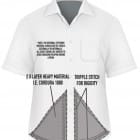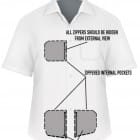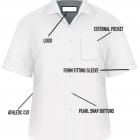New for 2018, the evolution of gun cleaning has begun with ProMat Gun Cleaning Mats. Featuring vivid colors, accurate to scale designs and manufactured in the USA.

Our signature line of Instructional Promat’s guide firearm owner in field striping and cleaning of weapon.
No more ruined towels or scuffed barrels. Simply unroll ProMat and convert any kitchen table, truck bed or work bench into a gunsmith station.
As a rule, the first thing a new/or seasoned shooter should do after purchasing a new weapon is learn its assembly and disassembly. This is done for a few reasons, 1) the more rounds you put through the weapon, the dirtier it will become and with the dirt the likelihood of a malfunction requiring proper cleaning and maintenance. 2) periodic inspection each component for damage.
Cerus Gear Instructional ProMat’s are the perfect blend of form and function. These lightweight, heavy duty cleaning mats are the perfect addition to your armorer’s bench. Large enough to handle a field-stripped handgun or rifle while instructions remain visible. The soft poly top sheet won’t mar or scratch your investment or heirloom, and resists gun oil or solvent stains, preserving your counter and kitchen towels. Educational, protective, and tacti-cool!
Complement your next firearm purchase with Cerus Gear’s new line of Instructional ProMat.
Specifications:
• Spacious (12” x 17”, 12” x 27”, 12” x 36”, 14” x 48” 3mm) padded work area
• Non-slip textured rubber base protects your work surface
• Heat bonded soft polyester protects your firearm from scratches
• Dye sublimation printing won’t wear or rub off
• Rolls up for easy compact storage
• Solvent and oil resistant
• Hand washable
• Life time warranty
• Made in the USA
Dealers Wanted!
For more information please visit www.CerusGear.com
?
WWW.CERUSGEAR.COM
SUPPORT@CERUSGEAR.COM
877.371.2586
700 W 1700 SOUTH
SUITE 106
LOGAN, UTAH 84321




























































































































